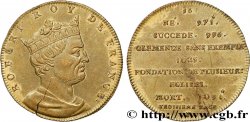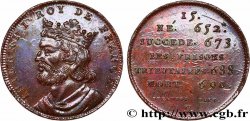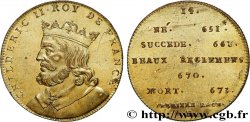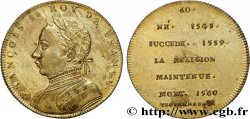E-auction 102-53943 - fjt_251616 - METALLIC SERIES OF THE KINGS OF FRANCE Règne de CHARLEMAGNE - 23 - frappe d’origine légère n.d.
You must signin and be an approved bidder to bid, LOGIN TO BID. Accounts are subject to approval and the approval process takes place within 48 hours. Do not wait until the day a sale closes to register. Clicking on « bid » constitutes acceptance of the terms of use of cgb.fr private e-auctions.
Bids must be placed in whole Euro amounts only. The sale will start closing at the time stated on the item description; any bids received at the site after the closing time will not be executed. Transmission times may vary and bids could be rejected if you wait until the last second. For further information ckeck the E-auctions F.A.Q.
NO BUYER'S FEE.
NO BUYER'S FEE.
| Estimate : | 45 € |
| Price : | 10 € |
| Maximum bid : | 12 € |
| End of the sale : | 30 March 2015 18:38:30 |
| bidders : | 4 bidders |
Type : Règne de CHARLEMAGNE - 23 - frappe d’origine légère
Date: n.d.
Metal : red copper
Diameter : 32 mm
Orientation dies : 12 h.
Weight : 10,99 g.
Edge : cannelée
Rarity : R1
Obverse
Obverse legend : CHARLEMAGNE ROY DE FRANCE.
Obverse description : Buste imaginaire lauré, cuirassé et drapé à gauche.
Reverse
Reverse legend : 23 - NÉ 742 - SACRÉ 768 - COURONNÉ EMPEREUR D’OCCIDENT 800 - MORT 814 - SECONDE RACE . P.
Reverse description : en neuf lignes.
Commentary
Charles Ier, dit le Grand ou Charlemagne (en latin Carolus Magnus, en allemand Karl der Große), est né le 2 avril, probablement en 742 ou 748, sans certitude quant au lieu de naissance. Il est mort à Aix-la-Chapelle le 28 janvier 814. Il est roi des Francs (768-814), devient par conquête roi des Lombards (774-814) et est couronné empereur par le pape Léon III le 25 décembre 800, relevant une dignité prestigieuse disparue depuis l'an 476 en Occident.
Monarque guerrier, il agrandit notablement son royaume par une série de campagnes successives, en particulier par la lente mais néanmoins violente soumission des Saxons païens (772-804). Souverain réformateur, soucieux d'orthodoxie religieuse et de culture, il protège les arts et les lettres et est à l'origine de la « renaissance carolingienne ».
Son œuvre politique immédiate ne lui survit pas longtemps. Respectueux de la tradition germanique en matière successorale, Charlemagne avait prévu le partage de l'Empire entre ses trois fils dès 806. L'empire ne sera finalement partagé entre ses trois petits-fils qu'au traité de Verdun en 843. Le morcellement féodal des siècles suivants, puis la division de l'Europe en États-Nations rivaux condamnent à l'impuissance ceux qui tentent explicitement de restaurer l'empire universel de Charlemagne, en particulier les souverains du Saint-Empire romain germanique, d'Otton Ier en 962 à Charles Quint au XVIe siècle, ou encore Napoléon Ier, hanté par l'exemple du plus éminent des Carolingiens.
Pour la suite de sa biographie, voir http://fr.wikipedia.org/wiki/Charlemagne.
Monarque guerrier, il agrandit notablement son royaume par une série de campagnes successives, en particulier par la lente mais néanmoins violente soumission des Saxons païens (772-804). Souverain réformateur, soucieux d'orthodoxie religieuse et de culture, il protège les arts et les lettres et est à l'origine de la « renaissance carolingienne ».
Son œuvre politique immédiate ne lui survit pas longtemps. Respectueux de la tradition germanique en matière successorale, Charlemagne avait prévu le partage de l'Empire entre ses trois fils dès 806. L'empire ne sera finalement partagé entre ses trois petits-fils qu'au traité de Verdun en 843. Le morcellement féodal des siècles suivants, puis la division de l'Europe en États-Nations rivaux condamnent à l'impuissance ceux qui tentent explicitement de restaurer l'empire universel de Charlemagne, en particulier les souverains du Saint-Empire romain germanique, d'Otton Ier en 962 à Charles Quint au XVIe siècle, ou encore Napoléon Ier, hanté par l'exemple du plus éminent des Carolingiens.
Pour la suite de sa biographie, voir http://fr.wikipedia.org/wiki/Charlemagne.







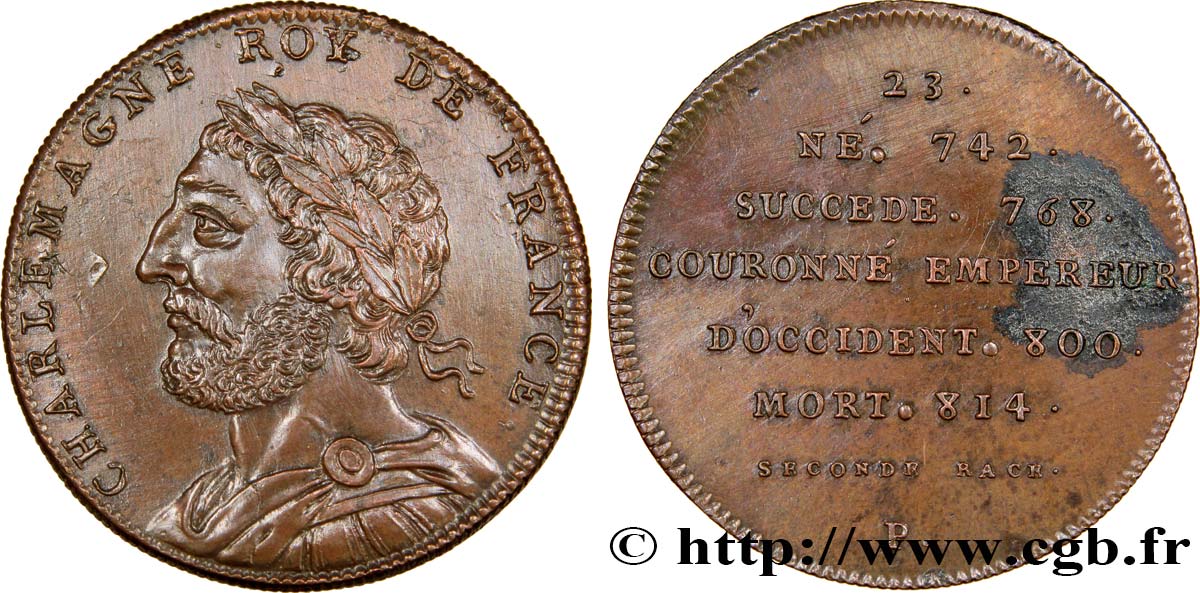
 Report a mistake
Report a mistake Print the page
Print the page Share my selection
Share my selection Ask a question
Ask a question Consign / sell
Consign / sell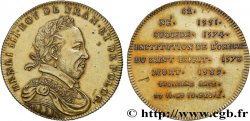
 Full data
Full data